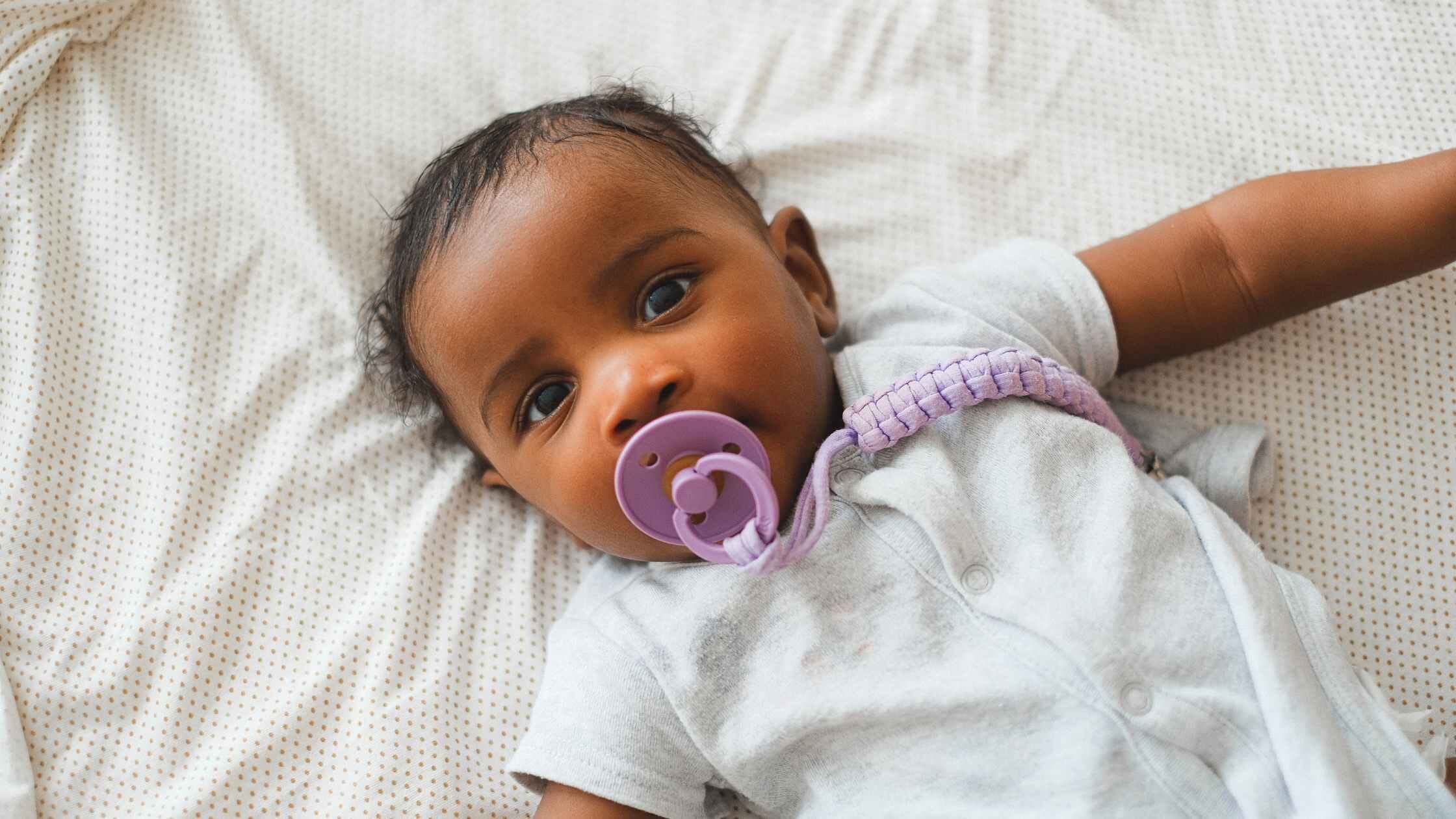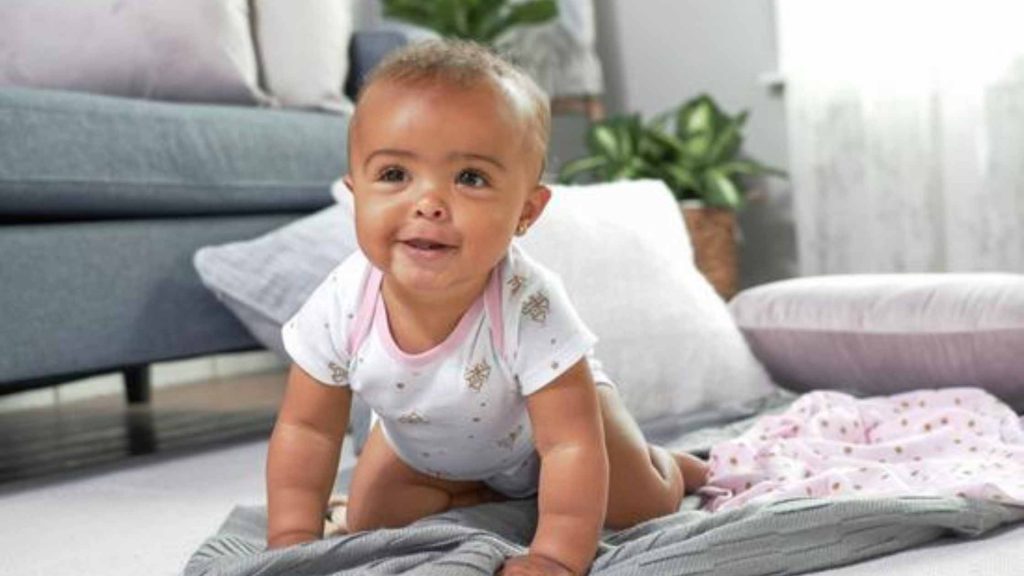
When do Babies Stop Wearing Onesies: When to Transition into Two-piece Clothing
- Created:
6. 2. 2023 - Updated:
26. 3. 2023
As a new parent:
You’ve surely stocked up your baby’s wardrobe with a lot of infant onesies.
And why not?
Onesies are incredibly beneficial for many reasons, including convenience and closure. They fit perfectly to your baby’s body, making it easy to manage daily messes like messy diapers.
But as they say…
All good things must come to an end. So, when is the end time for your baby’s onesies?
Let’s find out.
When do Babies Stop Wearing Onesies? Quick Answers
Onesies are ideal clothing for newborns. They are convenient and provide protection. However, when babies begin to grow, onesies become less convenient and more problematic. Knowing the exact time to replace onesies can be difficult, but here are common signs to look out for. When the baby starts potty training or starts walking and when they outgrow the onesie.
When to Transition Your Baby From Onesie to Two-piece clothings
Honestly:
There’s no universally accepted time for a baby to stop wearing onesies. However, parents should replace such clothing when their kids are between 12 and 24 months old.
That said:
Here are the most common signs that indicate your baby needs to stop wearing onesies:
When Baby Starts Potty Training
Perhaps:
The most common period when parents switch from onesies to two-piece baby clothing is the beginning of potty training.
Like every other baby milestone, potty training is important in a child’s life. It prepares children, through constant practice, to use the toilet without help.
However:
This period can be difficult. And let’s face it; it is never easy to train a child for anything, let alone tending to a call of nature themselves.
So:
You and your child need every help you can get for difficult tasks like this. Removing those onesies and replacing them with shorts or undies can help.
You can easily pull down shorts, and your baby can cope alone with time. Pull-up style nappies can also be taken off more easily.
On the other hand:
Onesies have a bottom latch you must undo before placing your baby in a potty. Realistically, babies can’t undo that latch on their own, and this complicates the potty training process.
Even worse:
To start potty training, your child must take off their full-length onesies.
Now:
Imagine a situation where you’re not close to the child, and they need to pee or poop. Or when your baby needs to poop in a hurry.
Let’s not even get to that.

When Baby Starts Walking
Fact is:
Many parents decide to ditch onesies when their babies start walking.
Walking is undoubtedly the most anticipated baby milestone. Parents even record videos to capture the precious first steps.
According to Researchgate, the age of onset for walking ranges between 12 and 14.5 months. But this doesn’t apply to all children.
Some take as low as 9 to 10 months while others, as late as 16 to 18 months.
As you may know:
Onesies are much easier to put on when babies lie on their backs, as they show little to no resistance. But as soon as they start walking around, getting them to stay still becomes challenging.
And, you need the baby to stay in a place to fit their arms and legs in one piece of clothing.
Now:
In this stage of development, onesies (especially full-length ones) are not ideal.
Full-length onesies with feet can become a health hazard for walking babies. They usually have a soft texture so your baby can easily slip on tiled floors.
And to be frank:
It is not worth the risk.
When your baby has Outgrown Onesies
Here’s the thing:
Manufacturers hardly make onesies for babies over 2 years old. So, even if your baby isn’t up to that age, it may have fast growth.
This means that you may not find onesies that’ll fit them properly.
In such instances:
You have to consider switching to regular clothes.
During Very High Temperatures
Get this:
You cannot ditch your baby’s onesies permanently for this reason. Unlike the rest, temperatures are seasonal, so you only have to stop using onesies when the weather is very hot.
This is especially during bedtime, as babies find it difficult to steep in stuffy conditions.
Conclusion
Onesies are great for newborns. They’re convenient and help protect babies. But there comes a time when babies have to stop wearing onesies.
Here are the signs to look out for when deciding the right time:
- When your baby starts potty training
- When your baby starts walking
- When your baby has outgrown Onesies
- When the temperature is very high hot
And so we’re done:
Now, if any of the above factors apply to your baby, you should know it’s time to end onesies.
Don’t forget to reach us via the comment section if you have further questions. We’ll get back to you ASAP.
Frequently Asked Questions on When Babies Need to Stop Wearing Onesies
Babies should stop wearing bodysuits when they start potty training and walking. They should also stop when they’ve outgrown the biggest baby bodysuits on the market.
No, a baby shouldn’t always wear a onesie. They are best for newborns, bedtime, and cold temperatures. But they don’t need to wear it when they’re moving, active, and when the temperature is hot.
Babies should wear onesies in the earliest stages of their lives. That is, the time they haven’t become active and mostly lie on their backs. Babies should also wear onesies during cold temperatures to protect their backs and bellies.























